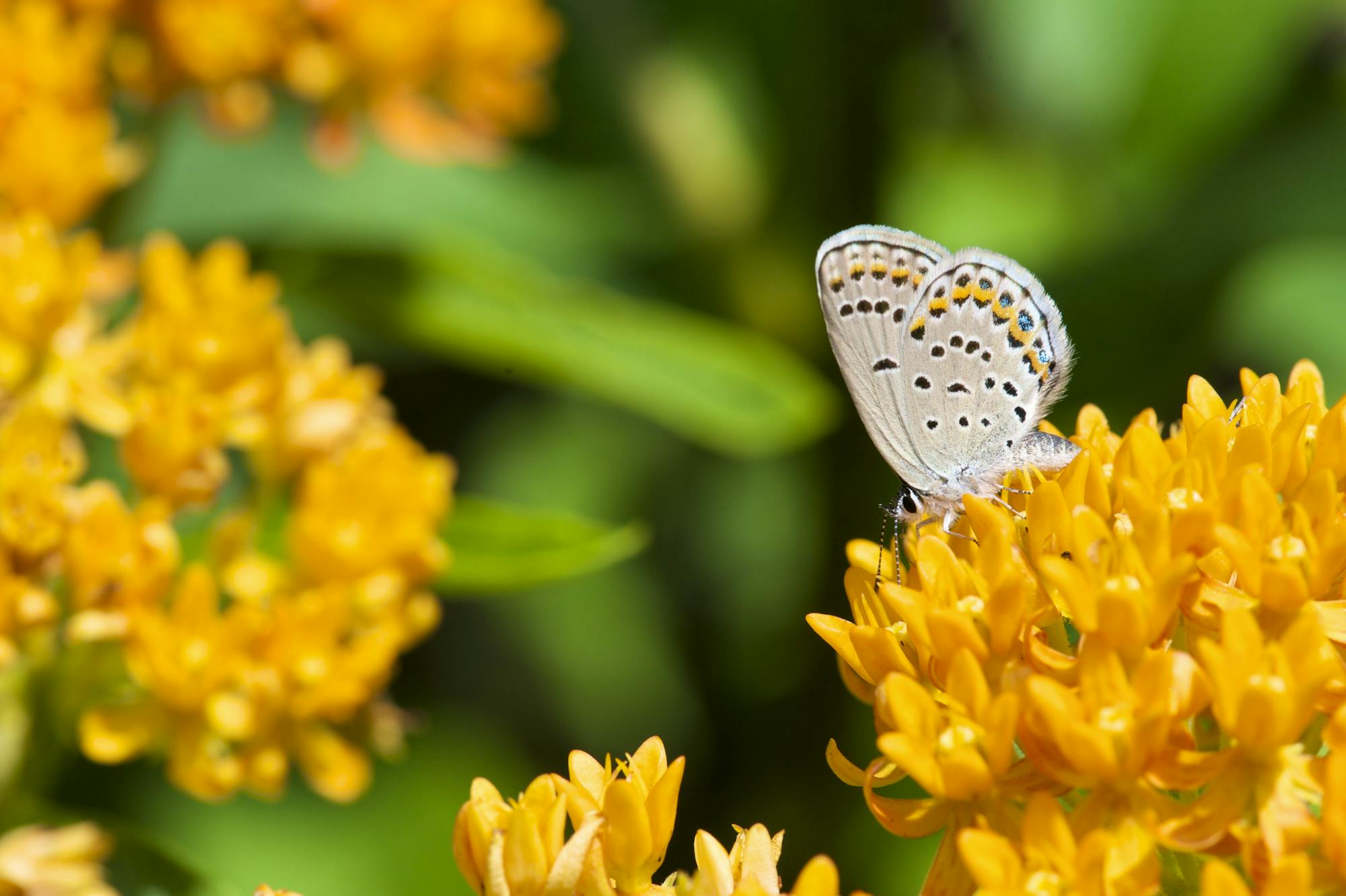Solar energy could be a Swiss Army knife in helping to save imperiled wildlife. Climate change is an obvious cause for renewable energy development, as solar and other forms reduce greenhouse gas emissions, helping to minimize the impacts of climate change on wildlife and their habitats. Now, solar energy is being used not only to minimize threats from climate change, but to restore habitat for pollinators.
Pollinators –like bees, butterflies, birds, and bats - are of concern to conservationists because of their role in maintaining ecological integrity through interconnections with native plant communities. Many species have co-evolved with plant species over millennia and play crucial roles in plant reproduction. Unfortunately, insects, birds and other pollinators are undergoing global population declines. Loss of habitat, climate change, and the use of agricultural pesticides threaten the survival of many species. When pollinator populations decline, the plants that depend on them are threatened with extinction as well. This degradation of the integrity of ecological systems may directly threaten human well-being. Pollinators play a critical role in feeding humanity – at least 80% of the crops we eat are pollinated by bees and other wildlife.
There are currently 33 insects, 5 birds, and 3 bats that act as pollinators that are federally listed as endangered or threatened under the U.S. Endangered Species Act. These include the rusty-patched bumblebee (Bombus affinis), St. Francis’ satyr (Neonympha mitchellii francisci), and Karner blue butterfly (Lycaeides melissa samuelis). Because of the pollinator crisis, conservationists are looking for creative ways to establish more habitat – which is where solar energy comes in! Research has shown that many native plants can thrive, with little maintenance, in and around solar energy installations. By creating and managing native vegetation that supports bees, butterflies, and other pollinating insects at large ground-mounted solar energy installations, we can promote pollinator conservation while combating climate change.
The considerable expansion of solar energy production in the United Stated has created an unprecedented opportunity to provide habitat for imperiled pollinators. The state of North Carolina alone, which is the second leading producer of solar energy (after California), had nearly 30,500 acres of solar arrays as of 2019. Solar energy projects typically have a lifespan of at least 25 years, so converting all these acres into pollinator habitat can be a lasting benefit to pollinator populations. Instead of having some sort of inert ground cover like turf grass that provides little ecological benefit and requires frequent maintenance, solar arrays are being used to restore native landscapes instead.
Defenders’ Center for Conservation Innovation (CCI) is embarking on a project to help promote this practice. By using Defenders’ computer vision models to map the current locations and footprints of ground-mounted solar arrays across states like Georgia, Michigan, and Wisconsin, we will determine the proximity of solar energy installations to agriculture and pollinator habitat. This analysis will help us estimate the possible improvement to habitat connectivity and conservation of pollinator species that could be achieved through native vegetation management at existing solar infrastructure.
We can also measure the overlap between solar energy sites and the ranges of listed pollinator species. This will give power companies a sense of where species protected by the Endangered Species Act occur whose habitat or recovery might be improved by native vegetation restoration practices, highlighting opportunities for these providers to help aid improve habitat with solar. Together, this information will be used to develop maps identifying priority areas for solar siting that can help recover imperiled pollinators.
Bumblebees and butterflies may not be the charismatic megafauna some usually think of when talking about wildlife conservation, but pollinators have an outsized impact on maintaining ecosystem health. Defenders of Wildlife is a conservation leader on ensuring we conserve wildlife from the deleterious impacts of climate change as well as the shorter-term impacts of utility scale development. Defenders believes all new utility-scale projects should be sited and operated “smart from the start.” Smart from the Start planning ensures that renewable energy facilities are built in the right places that minimize the impact on wildlife and habitat. By using solar energy to restore native vegetation, we can simultaneously combat climate change and provide these often-unsung ecological heroes a chance at recovery.










Follow Defenders of Wildlife
facebook bluesky twitter instagram youtube tiktok threads linkedin